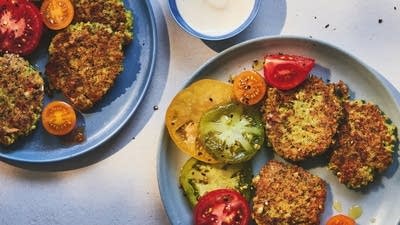
Toni Tipton-Martin is the author of The Jemima Code, which presents 150 rare black cookbooks dating to 1827. "The idea that these cookbooks stand as a representation for so, so many others that didn't have the ability to record what they were doing is pretty phenomenal," she says.
(Pictured above: The Farmer Jones Cook Book, issued by Fort Scott Sorghum Syrup Company, Kansas, 1914, 26 pages.)
Noelle Carter: What is The Jemima Code? What was the inspiration for your project?
 Toni Tipton-Martin
Photo: Naomi Logan Richard / White Glove Photos
Toni Tipton-Martin
Photo: Naomi Logan Richard / White Glove Photos
Toni Tipton-Martin: The idea of a Jemima code occurred to me in the process of researching the varied history of African-Americans working in America's kitchens. I discovered that they were quite a bit invisible. The idea of the code is that invisibility has provoked reactions from all of us throughout the years.
There are just so many multifaceted ways that people react to the Aunt Jemima image. The image was built on a myth -- a myth that compiled various characteristics of African-American women into this one larger-than-life mammy-type character. Scholars are still questioning who mammy was, and what she really represented. The fact that a culinary stereotype, which turned into a trademark, came out of that is really what caused this idea for me of a Jemima code.
NC: The book explores a number of stereotypes surrounding African-American cooking, including that it's simply about soul food, or that it's born out of poverty cooking. Then you blow those stereotypes up.
TTM: These books represent all walks of life. They are largely African-Americans functioning in middle-class settings, whether that is their own environment when they have the resources or while they're at work. What we're able to see there is the amazing flexibility and nimbleness of these cooks who are able to adjust between environments from their own home, perhaps less fortunate environments in some cases, to cooking in a really opulent space with amazing ingredients and access to all of the tools and possible gadgets that one could need in the kitchen. They did all of that working from memory.
The idea that these cookbooks stand as a representation for so, so many others that didn't have the ability to record what they were doing is pretty phenomenal. Among those characteristics that they demonstrate for us in the kitchen -- besides the incredible memory -- is the fact that they're able to perform what we think of as "chef techniques," culinary classic technique. We can see that in the recipes that they're creating. They just don't know to call it that.
NC: In addition to cookbooks, your collection includes related books and manuals covering such issues as catering and even servitude. One of the authors you profiled, Helen Mahammitt, owned her own cooking school and published a manual covering cooking, domestic service and catering.
 The Jemima Code
The Jemima Code
TTM: Helen Mahammitt is representative of the motive behind a lot of the cookbooks. We can look at the publishing of those books in two ways. The historic representation would be that these were just people who were creating books in order to provide more servants. That would be a negative way to look at the situation.
But if we try to look at it through a more positive lens, taking the same information, we're able to see that here is a woman who is conveying messaging to create more caterers. But she's also conveying to us what she values in the kitchen, her professional values, what her work ethic is. She conveys that in a very loving but also technical way. She's very precise. There is a culinary academy feel to her material. It's really a wonderful view into the mind of a culinary instructor who traditionally and historically have been represented as unable to convey their competencies.
Ordinarily, what we historically know about these people is that they could cook very well, but that they could not communicate their skills beyond their immediate community. Of course working within the oral tradition and the inability to read and write would be a hindrance. But what these books show us is that when they had the opportunity, they were quite able to convey what they knew to be their knowledge and their wisdom.
We can see through the social arc that has been created by these books -- I have recorded them chronologically. But what is really wonderful about them is that they also speak to us about political and social issues of the time. They're not just conveying their wisdom about cooking, but they're also sharing with us their passion for their communities. Women published fundraiser cookbooks in order to build facilities for young women where they could learn cooking, but also how to vote, how to purchase land, how to raise their families and how to live more holistically.
Then we can see them also educating one another in finer cooking -- they were criticized for that at some point in history as trying to cook "white." I'm troubled by this idea that we have allowed the color of one's skin to penetrate food and the table. The table is a place for us to enjoy one another's company and share our commonality. Yet we have used skin color as a wedge at the table.
My hope for this book, as it was for my ancestors and these authors, is that when we know more about them as individuals, we can then learn to respect them, to learn from them, to be inspired by them. And to return to the kitchen at a time when we're all being encouraged to take better control of our health by cooking for ourselves and consuming less fast and processed food.
Below we have a collection of cookbook covers featured in The Jemima Code: Two Centuries of African American Cookbooks (University of Texas Press, 2015), courtesy of Toni Tipton-Martin. For more information visit www.utexaspress.com.
 The House Servant’s Directory, Robert Roberts, Boston Munroe and Francis, 1827; New York, Charles S. Francis, 1827, facsimile edition, Waltham, Massachusetts; Gore Place Society, 1977, 180 pages.
The House Servant’s Directory, Robert Roberts, Boston Munroe and Francis, 1827; New York, Charles S. Francis, 1827, facsimile edition, Waltham, Massachusetts; Gore Place Society, 1977, 180 pages.
 A Domestic Cook Book: Containing a Careful Selection of Useful Receipts for the Kitchen, by Malinda Russell, published by the author, printed by T.O. Ward, Paw Paw, Michigan, 1866, facsimile edition, Detroit: Inland Press, 2007, 40 pages.
A Domestic Cook Book: Containing a Careful Selection of Useful Receipts for the Kitchen, by Malinda Russell, published by the author, printed by T.O. Ward, Paw Paw, Michigan, 1866, facsimile edition, Detroit: Inland Press, 2007, 40 pages.
 Aunt Caroline’s Dixieland Recipes: A Rare Collection of Choice Dishes, compiled by Emma and William McKinney, Chicago: Laird and Lee, 1922, 147 pages.
Aunt Caroline’s Dixieland Recipes: A Rare Collection of Choice Dishes, compiled by Emma and William McKinney, Chicago: Laird and Lee, 1922, 147 pages.
 Mammy’s Cook Book, Katharin Bell, 1927, 160 pages.
Mammy’s Cook Book, Katharin Bell, 1927, 160 pages.
 New Orleans Cook Book, Lena Richard, New York: Dover, 1985, 146 pages.
New Orleans Cook Book, Lena Richard, New York: Dover, 1985, 146 pages.
 A Date with a Dish: A Cook Book of American Negro Recipes, Freda De Knight, New York: Hermitage Press, 1948.
A Date with a Dish: A Cook Book of American Negro Recipes, Freda De Knight, New York: Hermitage Press, 1948.
 Plantation Recipes, Lessie Bowers, New York: Speller and Sons, 1959, 194 pages.
Plantation Recipes, Lessie Bowers, New York: Speller and Sons, 1959, 194 pages.
 Soul Food Cookbook, Bob Jeffries, Indianapolis: Bobbs-Merrill, 1969, 116 pages.
Soul Food Cookbook, Bob Jeffries, Indianapolis: Bobbs-Merrill, 1969, 116 pages.
 Chez Helene: “House of Good Food” Cookbook, Austin Leslie, New Orleans, Louisiana: De Simonin, 1984, 64 pages.
Chez Helene: “House of Good Food” Cookbook, Austin Leslie, New Orleans, Louisiana: De Simonin, 1984, 64 pages.
 Stirrin’ the Pots on Daufuskie, Billie Burn, Hilton Head, South Carolina: Impressions, 1985, 197 pages.
Stirrin’ the Pots on Daufuskie, Billie Burn, Hilton Head, South Carolina: Impressions, 1985, 197 pages.
 Aspects of Afro-American Cookery, Howard Paige, Lanthrup Village, Michigan: Aspects, 1987, 256 pages.
Aspects of Afro-American Cookery, Howard Paige, Lanthrup Village, Michigan: Aspects, 1987, 256 pages.
 In Pursuit of Flavor, Edna Lewis, New York: Knopf, 1988, 323 pages.
In Pursuit of Flavor, Edna Lewis, New York: Knopf, 1988, 323 pages.
Before you go...
Each week, The Splendid Table brings you stories that expand your world view, inspire you to try something new, and show how food connects us all. We rely on your generous support. For as little as $5 a month, you can have a lasting impact on The Splendid Table. And, when you donate, you’ll join a community of like-minded individuals who love good food, good conversation, and kitchen companionship. Show your love for The Splendid Table with a gift today.
Thank you for your support.
Donate today for as little as $5.00 a month. Your gift only takes a few minutes and has a lasting impact on The Splendid Table and you'll be welcomed into The Splendid Table Co-op.




